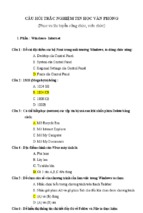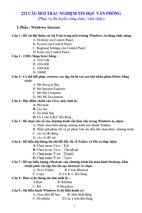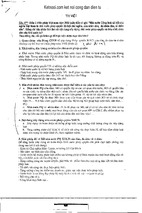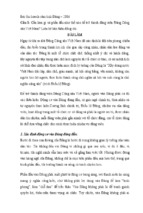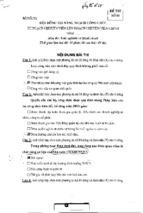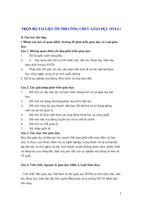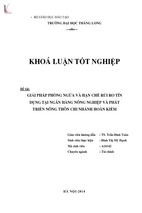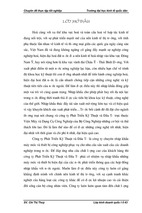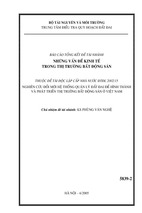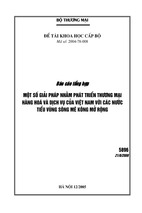The art of covert hypnosis
THE ART OF
COVERT HYPNOSIS
BY STEVEN PELIARI
© The Art Of Covert Hypnosis
www.theartofcoverthypnosis.com
1
Legal Notice
ALL RIGHTS RESERVED:
No part of this ebook or any associated content may be copied, reproduced,
transmitted, either electronically or via any other means, without the express
written permission of the author. The author maintains full copyright to all
contents of this ebook. You acknowledge that you have purchased this
ebook by reading any further than this page. If you have not purchased this
ebook you realise that you may purchase it from
www.theartofcoverthypnosis.com and that by failing to do so you are using
an illegal copy of this material.
DISCLAIMER:
All contents contained within this material is designed for entertainment
purposes only and is not designed to be used for any practical purpose. The
author of this material disclaims all liability to any person in respect of
anything, and of the consequences of anything, done or omitted to be done
by any such person in reliance, whether wholly or partially, upon any
information presented in this material. Further, the author makes no
guarantee as to the accuracy or validity of any information presented. The
use of any material within this course is done so at your own risk and is in
no way recommended by the author.
© The Art Of Covert Hypnosis
www.theartofcoverthypnosis.com
2
Preface
What we see, what we hear, what we believe, how much of it is real, and
how much of it is just an illusion that we create?
Whilst you may go about your day to day life quite content that you can
explain your surroundings, is there not a little thought within the back of
your mind, a thought that tells you that perhaps everything you know about
life, is wrong?
What happens when someone comes and demonstrates to you that your
knowledge of the world is quite false? What happens when that person
seemingly defies the very laws of physics and reads your mind?
They reveal to you your deepest and most inner of thoughts and desires,
thoughts that you wouldn't dare tell another person. Suddenly that security
that you have, that knowledge you have of the world, is questioned.
But the thing is, is that person didn't break any laws of physics, nor did they
read your mind.
All that person did, was make you believe that they could read your mind. It
was by accepting that false belief, that illusion, that you brought on all these
odd thoughts entirely by your own doing.
Welcome to The Art Of Covert Hypnosis.
© The Art Of Covert Hypnosis
www.theartofcoverthypnosis.com
3
Table Of Contents
Chapter 1 – Course Structure
1.
2.
3.
4.
Introduction
Course Information
What To Expect
Study Guidelines
9
10
14
16
Chapter 2 – An Introduction to Covert Hypnosis
1.
2.
3.
4.
5.
Fundamentals of Hypnosis
Fundamentals of NLP
Fundamentals of Mentalism
Uniting The Three Fields
Possibilities of Covert Hypnosis
18
21
24
25
26
Chapter 3 – A Journey Into Hypnosis
1.
2.
3.
4.
5.
6.
7.
Theory of Mind
Principles of Suggestion
Trance States
Hetero Hypnosis
Self Hypnosis
Revision
Exercises
29
37
47
50
55
58
60
Chapter 4 – Hetero Hypnosis Explored
1.
2.
3.
4.
5.
6.
Post-Hypnotic Suggestion
Instant Induction
Power of Placebo
Ericksonian Hypnosis
Revision
Exercises
© The Art Of Covert Hypnosis
www.theartofcoverthypnosis.com
62
65
71
74
78
80
4
Chapter 5 – A Journey Into NLP
1.
2.
3.
4.
5.
The Milton Model
Principles of Rapport
Principles of Anchoring
Revision
Exercises
81
84
92
98
100
Chapter 6 – Exploring Representational Systems
1.
2.
3.
4.
5.
Theory of Representational Systems
Eye Cues
Submodalities
Revision
Exercises
101
104
111
114
117
Chapter 7 – A Journey Into Mentalism
1.
2.
3.
4.
5.
The Art Of Deception
Sleight of Mind
Misdirection
Revision
Exercises
118
119
124
127
128
Chapter 8 – Exploring The Art Of Reading
1.
2.
3.
4.
5.
6.
Cold Reading
Warm Reading
Hot Reading
The Win-Win Game
Revision
Exercises
129
135
136
138
141
142
© The Art Of Covert Hypnosis
www.theartofcoverthypnosis.com
5
Chapter 9 – Hypnotic Tonality
1.
2.
3.
4.
5.
Importance of Tonality
Desired Tonality
Maintaining Consistent Tonality
Revision
Exercises
144
145
147
154
156
Chapter 10 – Personality Types and Suggestion
1.
2.
3.
4.
5.
Personality Types
Expanding on Sleight of Mind
Illusion of Number Guessing
Revision
Exercises
158
162
171
180
181
Chapter 11 – Advanced Hypnotic Principles: Mass Hypnosis
1.
2.
3.
4.
5.
6.
The Crowd Mentality
Establishing Authority
How Stage Hypnosis Works
Application of Suggestion to the Masses
Revision
Exercises
183
185
187
191
194
195
Chapter 12 – Advanced NLP Principles: Instant Rapport
1.
2.
3.
4.
5.
Anchoring States of Rapport
Subtleties of Language
Autopilot Resistance
Revision
Exercises
© The Art Of Covert Hypnosis
www.theartofcoverthypnosis.com
197
202
203
207
208
6
Chapter 13 – Advanced Mentalism : The Illusion of Supernatural Phenomena
1.
2.
3.
4.
5.
6.
7.
The Psychic
The Medium
The TV Evangelist
The Astrologist and Tarot Card Reader
Safeguarding Against The Use of Charlatanism
Revision
Exercises
209
212
214
216
218
219
221
Chapter 14 – Body Language Mastery
1.
2.
3.
4.
5.
6.
7.
Breathing Patterns
Eye Contact
Facial Expressions
Body Positioning
Hand Gestures
Revision
Exercises
222
225
226
228
230
231
234
Chapter 15 – Exploring Covert Hypnosis
1.
2.
3.
4.
5.
6.
Advanced Studies of Instant Induction
Manipulation of Brain States
Multiple Channel Hypnosis
Safeguards Against Being Discovered
Revision
Exercises
236
240
248
251
253
255
Chapter 16 – State of Mind Mastery
1.
2.
3.
4.
5.
6.
Outlook Upon People and Life
The Energetic State of Mind
The Distancing State of Mind
The Relaxed State of Mind
Revision
Exercises
© The Art Of Covert Hypnosis
www.theartofcoverthypnosis.com
257
259
261
263
266
267
7
Chapter 17 – Advanced Covert Hypnosis Techniques
1.
2.
3.
4.
5.
6.
The Desire for Acknowledgement
The Command of Action
The Revelation of Secrets
The Ball of Attractable Energy
Revision
Exercises
269
272
275
280
284
286
Chapter 18 – Appearance, Perception and Deception
1.
2.
3.
4.
5.
The Performer
The Seducer
The Storyteller
Revision
Exercises
288
293
297
299
300
Chapter 19 – Mastering Covert Hypnosis
1.
2.
3.
4.
5.
Mastering Resistance
Mastering Rapport
Controlling Any Conversation
Revision
Exercises
302
305
308
312
314
Chapter 20 – Bringing Everything Together
1.
2.
3.
4.
Application of Acquired Knowledge
Consistency of Practice
The Code of Covert Hypnotists
Conclusion
© The Art Of Covert Hypnosis
www.theartofcoverthypnosis.com
315
319
320
321
8
Chapter 1 – Course Structure
1. Introduction
First and foremost, thank you for purchasing this course. Throughout this
course you will be learning certain aspects to reality that few people know to
exist.
You will learn about how to persuade other people to do things for you, how
to make them feel comfortable and happy to be within your presence, and
how to make your lovers and companions loyal to you.
You will also learn about the techniques that psychics, clairvoyants, stage
hypnotists, politicians, leaders, TV evangelists, spiritualists and many other
types of professions use in order to omit a sense of authority and command
respect from large groups of people.
The techniques you will learn in this course are no laughing matter, and can
be used for purposes of good, or bad. I am teaching you these techniques
only in the good faith that you will use them for good purposes, to help both
yourself and others. I do not ever condone the use of covert hypnosis on
anyone without their permission.
So just what is covert hypnosis exactly? Covert hypnosis is essentially a way
to hypnotise people outside of their conscious awareness. It works by
influencing a person's subconscious mind as opposed to their conscious
mind.
Throughout my use of covert hypnosis I have found that there are three
primary fields that must be learned in order to execute covert hypnosis
successfully, and these three fields are Hypnosis, NLP, and Mentalism.
Hypnosis is essentially the art of hypnotising people. NLP teaches you the
ways to apply hypnosis discreetly, outside of peoples conscious awareness.
Mentalism teaches you ways to give people false illusions. These false
© The Art Of Covert Hypnosis
www.theartofcoverthypnosis.com
9
illusions can be used to create an environment where people are vulnerable
to hypnosis and suggestion.
When these three fields come together, many things become possible. This
is what covert hypnosis is, the art of being able to use Hypnosis, NLP and
Mentalism together as one in order to achieve your goals.
With this course you have received 20 audio files that you can listen to for
your convenience. These audio files will cover everything that's written in
this book, so if you'd rather listen to them as opposed to reading this book
then you may do that.
It is important however that you do NOT listen to these audio files when
driving, operating machinery or doing any other task that requires
concentration or responsibility.
This is because you may be guided into a state of hypnosis whilst listening
to the techniques taught throughout the course. There will be examples given
of hypnotic inductions, so you need to be aware that there is a chance you
may fall into hypnosis. For this reason only listen to these audio files when
you are in the comfort of your own home, and have no obligations.
It is recommended that you now read or listen to the following section in
order to understand how this course is structured.
2. Course Information
This course is comprised of 20 chapters. Each of these chapters contains at
least 10 pages of information with revision and exercises included.
These chapters will teach you how to use Hypnosis, NLP and Mentalism in
applied settings.
The chapters are structured as follows Chapter 2 - An Introduction to Covert Hypnosis
© The Art Of Covert Hypnosis
www.theartofcoverthypnosis.com
10
This chapter will give you an overview of the fundamentals of Hypnosis,
NLP and Mentalism. Consider this chapter to be your introduction into the
world of covert hypnosis.
Chapter 3 - A Journey Into Hypnosis
This chapter will start by introducing you to the theory behind how hypnosis
works, and will also teach you how to hypnotise someone voluntarily. You
will also learn how to conduct self-hypnosis.
Chapter 4 - Hetero Hypnosis Explored
This chapter will further delve into hypnosis and look at how it's applied in
more discreet settings. You will also be introduced to Ericksonian Hypnosis,
and the power of placebo.
Chapter 5 - A Journey Into NLP
This chapter will introduce you to the core aspects of NLP. You will learn
about rapport and anchoring and the ways in which Ericksonian Hypnosis
can be applied discreetly through the use of subtle suggestion.
Chapter 6 - Exploring Representational Systems
In this chapter you will be exposed to representational systems and
submodalities. You will also learn how eye cues can be used as a way of
determining which representational system a person is accessing.
Chapter 7 - A Journey Into Mentalism
In this chapter you will be introduced to mentalism. You will learn how
misdirection and sleight of mind can be used to create false realities for
people.
Chapter 8 - Exploring The Art Of Reading
In this chapter you will learn the mentalism art of reading and how it can be
used to give the illusion of clairvoyance and other paranormal abilities. You
© The Art Of Covert Hypnosis
www.theartofcoverthypnosis.com
11
will also learn how to use reading in order to have a seemingly intuitive
insight into a person's life.
Chapter 9 – Hypnotic Tonality
In this chapter you will learn how to create a hypnotic tonality, and use it in
your day to day conversations in order to establish rapport with people and
lower them into relaxed states.
Chapter 10 – Personality Types and Suggestion
In this chapter you will learn how to determine a person's personality type
based upon the way they speak and behave, and how you can word
suggestions in order to best suit the individual's personality.
Chapter 11 – Advanced Hypnotic Principles: Mass Hypnosis
In this chapter you will learn how to perform hypnosis on both large crowds
and small groups of people. You will learn the techniques that stage
hypnotists use to convince large amounts of people to do something.
Chapter 12 – Advanced NLP Principles: Instant Rapport
This chapter will further expand upon ways to establish rapport with people,
and will teach you how to create an instant rapport with just about anyone
you meet.
Chapter 13 – Advanced Mentalism: The Illusion of Supernatural
Phenomena
This chapter will teach you exactly how psychics, mediums, spiritualists,
faith healers, tarot card readers, astrologists and other types of charlatans
operate.
Chapter 14 – Body Language Mastery
This chapter will teach you how to master your body language. It will teach
you about body position, breathing rate, hand gestures, the importance of
eye contact and other forms of body language.
© The Art Of Covert Hypnosis
www.theartofcoverthypnosis.com
12
Chapter 15 – Exploring Covert Hypnosis
This chapter will teach you ways to instantly hypnotise just about anyone
you meet through the use of Instant Induction. You will also learn how to
manage multiple forms of suggestion, anchoring and rapport in a
conversation.
Chapter 16 – State of Mind Mastery
This chapter will teach you the various states of mind you can adopt in order
to draw people towards you, keep them away, or just remain relaxed.
Chapter 17 – Advanced Covert Hypnosis Techniques
This chapter will bring all your knowledge together and teach you various
covert hypnosis techniques that you can use to achieve various goals.
Chapter 18 – Appearance, Perception and Deception
This chapter will teach you how to act out different types of personalities
that will change the way people think of you. These personalities will create
a false reality that will allow you to perform various forms of covert
hypnosis.
Chapter 19 – Mastering Covert Hypnosis
This chapter will combine many things you have learned in the previous
chapters and teach you how to master resistance, rapport and control any
conversation that you have with someone.
Chapter 20 – Bringing Everything Together
This chapter will look at combining everything you have learned and
applying it to your day to day life.
© The Art Of Covert Hypnosis
www.theartofcoverthypnosis.com
13
3. What To Expect
By completing this course in accordance with the Study Guidelines, you can
expect to achieve a powerful form of confidence and have an ability to
communicate with people unlike you ever have before.
You can expect to be able to make people do things for you, quite happily,
by applying the various techniques that you will be taught. With that being
said, covert hypnosis does have its limitations.
To start with, you cannot use covert hypnosis, or any other form of hypnosis,
in order to bend people against their will. Covert hypnosis works only when
a person wants to experience what you're asking them to experience.
The trick is in creating the desire for the person to experience something. If
you can create this desire, then you can effectively make a person do
anything, however they must always be willing to do it.
We can create this desire from a subconscious level, outside of the person's
conscious awareness. This means that a person may think they want to do
something by their own free will, without realising that you were the one
who planted the suggestion.
So whilst covert hypnosis can be a very powerful way to have people do
things for you, it also has its limitations. Let's look at some common
misconceptions surrounding hypnosis.
Some Misconceptions Surrounding Hypnosis
Hypnosis is not a field without its misconceptions and myths. Before you
proceed any further in this course, you should make yourself aware of just
what hypnosis is exactly, and what it is not.
Myth #1: Hypnosis can be used against peoples will.
Hypnosis cannot be used against a person’s conscious will. As you delve
deeper into this course and gain an understanding of the critical mind, you
© The Art Of Covert Hypnosis
www.theartofcoverthypnosis.com
14
will learn that people will reject suggestions that they don’t agree with. Now
there is a twist however.
A lot of hypnotists don’t know how to incorporate NLP and Mentalism into
hypnosis in order to make a person want to do something that they normally
wouldn’t want to do. Learning how to do this requires an advanced level of
knowledge which will come much later in this course. It is important to
understand however that the moment a person consciously does not want to
do something, then they won’t do it.
Myth #2: Hypnosis is just placebo
Whilst placebo plays a role in hypnosis, hypnosis certainly isn’t just
placebo. Scientists have conducted many experiments showing different
brain wave functions that are unique to a person experiencing hypnosis.
When people are guided into various states of trance and given suggestions,
they will often act upon those suggestions many years in the future, even
whilst consciously forgetting any suggestions that may have been planted
within them. Phenomena such as this cannot be explained due to placebo
alone.
Myth #3: Hypnosis offers a means of mass mind control
Whilst hypnosis has been used on vast amounts of people throughout the
ages of history, and is still used today by politicians, leaders, advertisers and
other people that attempt to sway the masses, the notion of ‘mind control’ is
an incorrect one. Hypnosis cannot ever ‘control’ a person’s mind, it can only
offer that person suggestions, which the person’s subconscious mind must
act upon in order to make a reality.
Hopefully by clarifying these common myths you will have a better idea of
what hypnosis is capable of, and what it is not.
© The Art Of Covert Hypnosis
www.theartofcoverthypnosis.com
15
4. Study Guidelines
It is highly recommended that you follow the following study routine in
order to achieve maximum benefit from this course. If you do not follow this
study routine then you run the risk of missing out on some key aspects that
later parts of the course will rely upon, and you may soon end up lost and
confused.
Maximum benefit from this course will be achieved by studying it over a
period of 16 weeks and by achieving a high level of competence with each
of the exercises at the end of each chapter before moving on to the next
chapter.
The recommended 16 week study routine is as follows Week 1 Read over Chapter 2 & Chapter 3. Complete the exercises in Chapter 3.
Only once you have a high level of competence with the exercises
mentioned in Chapter 3 should you progress onto Chapter 4.
Week 2 Read over Chapter 4 and complete the exercises mentioned. Only once you
have a high level of competence with the exercises mentioned in Chapter 3
should you progress onto Chapter 5.
Weeks 3 – 15
Keep progressing at a rate of one new chapter per week, only proceeding
onto the next chapter once you have attained a high level of competence
within the exercises mentioned.
© The Art Of Covert Hypnosis
www.theartofcoverthypnosis.com
16
Week 16
Read over Chapter 19 & 20. Complete the exercises in Chapter 19. Use the
Revision And Exercise Manual to go back over previous exercises again
and to achieve a level of mastery with them.
What to do if you find some exercises too difficult
If you find some exercises to be too difficult then make a record as to
exactly where you failed with the exercise. It is important you at least try
each exercise to see where about's you are failing.
If you absolutely cannot complete an exercise, then move on to the next
chapter, and revise the exercise at a little stage when you have more
competence.
Now, sit back and enjoy your journey into The Art Of Covert Hypnosis.
© The Art Of Covert Hypnosis
www.theartofcoverthypnosis.com
17
Chapter 2 - The Fundamentals of Covert Hypnosis
1. Fundamentals of Hypnosis
Hypnosis, an art that has been used for many years to help people in a
variety of ways, has only recently begun to be recognised as a valid field of
scientific enquiry. Before anti-pain drugs were invented, hypnosis was
commonly used by physicians and other professionals as a means of
preventing and managing pain.
Those that were wounded or were undergoing surgery would often enter into
a state of hypnosis, through the guidance of a trained hypnotist, so as to
alleviate their symptoms and pain.
Since the invention of pain relief drugs, hypnosis has quietly subsided from
mainstream knowledge and public awareness. Most people know hypnosis
only through stage shows, and most people haven’t even witnessed a
professional hypnotist in action, at least, not knowingly.
Throughout the ages a number of groups and individuals studied hypnosis
extensively, and mastered and refined its many principles. They took
hypnosis outside of clinical practice and were able to apply it to every day
life, through the use of conversation, body language, even through television
and radio.
Over time, and thanks primarily to the contributions of Dr. Milton Erickson,
hypnosis was expanded upon and refined in many ways. There was
discovered a way to seduce a person’s subconscious mind and plant
suggestions within it, causing the person to behave in just about any manner
the hypnotist pleased, all without the person even being aware that such a
thing was going on.
© The Art Of Covert Hypnosis
www.theartofcoverthypnosis.com
18
This field came to be known as covert hypnosis, although the term itself is
rarely used (those that know of this field rarely speak about it).
History of Hypnosis
In order to understand hypnosis, we first need to look into the history of it.
Hypnosis itself has been around since the existence of mankind, it just hasn’t
been interpreted and defined until recently.
Anton Mesmer is generally credited as being the first person to recognise the
effects of hypnosis, however he believed these effects were due to what was
known as animal magnetism, which was the use of magnets passing through
various parts of the body in order to heal it.
Whilst animal magnetism did seem to have a healing effect, it was later
discovered that the effects were not due to magnets at all, but rather due to
hypnosis.
It was James Braid that developed the field of hypnosis, and coined the term
as such. He found that hypnosis resulted in prolonged eye fixation to an
object of some form, which is possibly what led to the popular notion of a
hypnotist using a swaying watch in order to hypnotise his or her patients.
Braid's discoveries led to the development and improvement of hypnosis,
eventually helping physicians to develop ways to treat patients and amputees
with minimal pain through the use of hypnosis.
A number of researchers, psychologists and physicians made contributions
to hypnosis over time, however it wasn’t until the time of Dr. Milton
Erickson in the 1970-1980's that hypnosis really took on its modern form.
Erickson separated the states of the conscious and subconscious mind and
was famous for being able to establish rapport with his clients through just
about any means possible.
He believed that by establishing some form of familiarity with a subject, that
work could be undertaken on the unconscious mind of the subject, and
positive changes made.
© The Art Of Covert Hypnosis
www.theartofcoverthypnosis.com
19
Erickson’s finding contributed heavily to the development of the field of
NLP, and his techniques are frequently taught and applied in just about all
forms of modern hypnosis.
The Applications of Hypnosis
Now that you have an understanding of a little of the history behind
hypnosis, we can delve into some of its practical uses.
Hypnosis is used by people every day of the week to help treat a number of
addictions, phobias, anxiety, depression and other psychological ailments.
Just about anything where the mind is concerned, hypnosis can intervene in
some way.
Now hypnosis can be applied in one of two ways, it can be applied through
the use of autosuggestion, which is commonly known as ‘self hypnosis’ or it
can be applied in an interpersonal setting, which is known as ‘hetero
hypnosis’.
Self hypnosis involves repeating messages to oneself whilst in a deeply
relaxed state, causing the messages to eventually seep into the subconscious
mind and affect the behaviour and thought patterns of the individual.
Hetero hypnosis typically takes place when another person hypnotises you
and guides you into a relaxed state. This can take place through either the
guidance of a hypnotherapist, or through a hypnotist such as is seen at a
stage hypnosis show.
Covert hypnosis is a very advanced form of hetero hypnosis, however before
we get into it there are a number of other topics in hypnosis that we must
first cover.
Your Hypnosis Study Program
Hypnosis has a set of principles that it must follow. In Chapter 3, you will
learn about the Theory of Mind, which is an explanation for the way
© The Art Of Covert Hypnosis
www.theartofcoverthypnosis.com
20
- Xem thêm -

